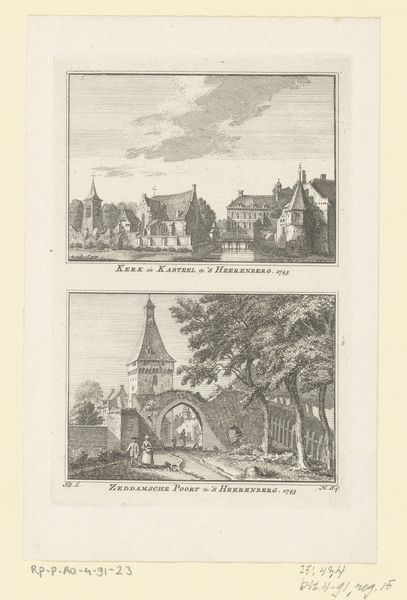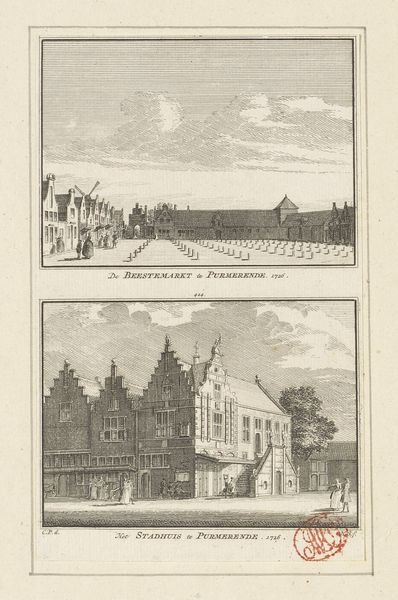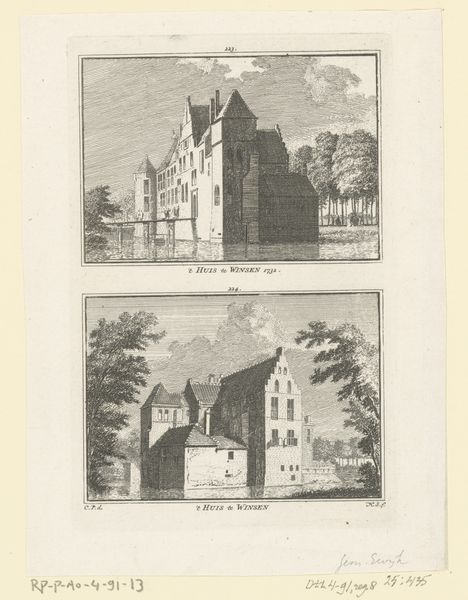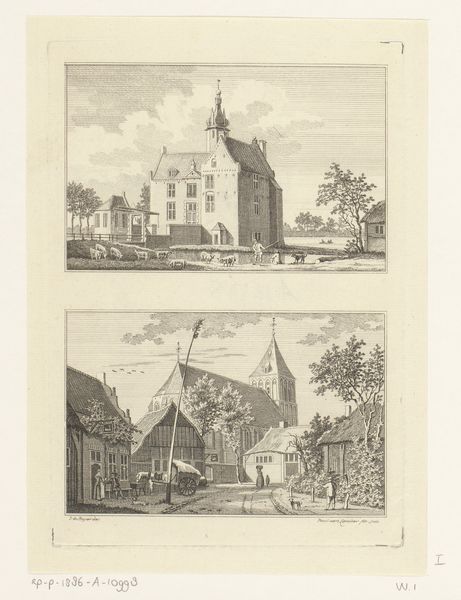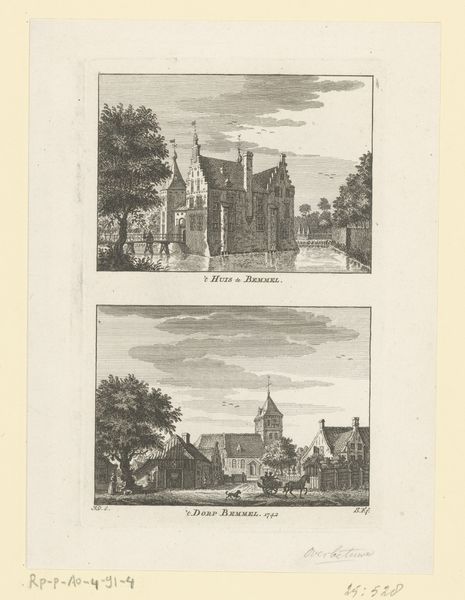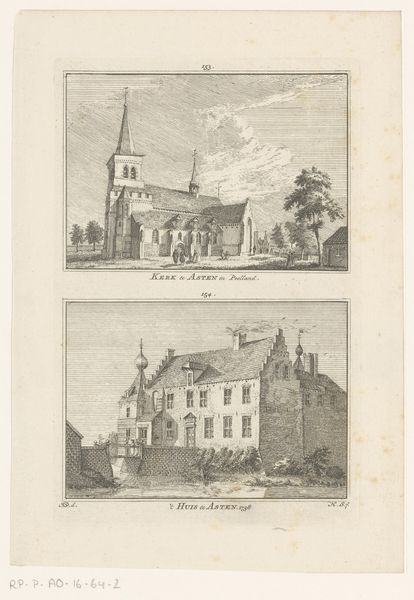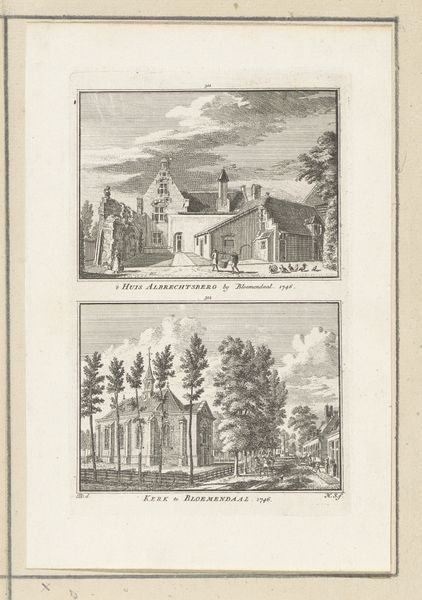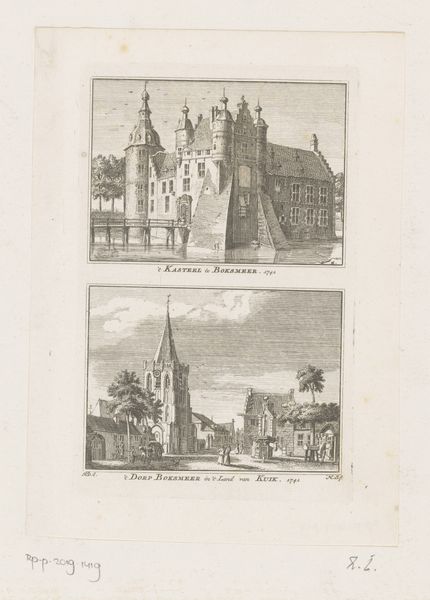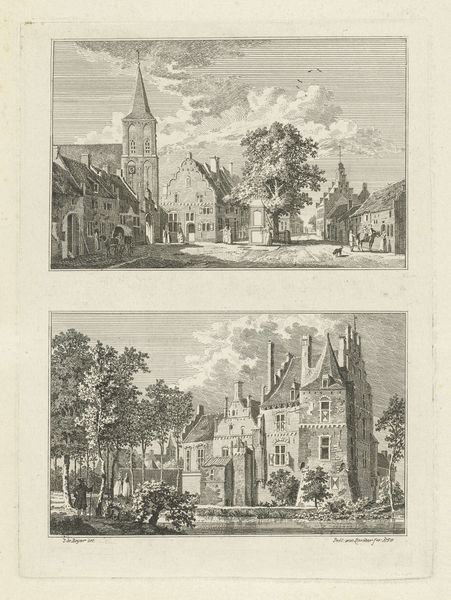
Gezicht op de Amsterdamse Poort en gezicht op de Neckerpoort te Purmerend, 1726 1757 - 1792
0:00
0:00
hendrikspilman
Rijksmuseum
Dimensions: height 163 mm, width 102 mm
Copyright: Rijks Museum: Open Domain
Curator: Immediately, there’s something so orderly, almost meditative, about the neatness of these engravings. Editor: Indeed! We are looking at "Gezicht op de Amsterdamse Poort en gezicht op de Neckerpoort te Purmerend," or Views of the Amsterdam and Necker Gates in Purmerend, created sometime between 1757 and 1792 by Hendrik Spilman. It's fascinating to observe these cityscapes immortalized through printmaking. Curator: "Immortilized" is the perfect word. There’s a sense of… suspended animation. A breeze couldn't rustle those leaves, you know? I imagine Spilman meticulously etching each tiny line, holding the world still. Editor: The Dutch Golden Age aesthetic is palpable, particularly in the almost scientific precision with which Spilman renders these architectural structures. The gates become symbols of civic pride and commercial power. Did these function more as welcoming points of trade or points to control access? Curator: You know, my eye is drawn to the people. Tiny figures in each scene, strolling, chatting… It brings a lovely human dimension to it all. I imagine them discussing, gossiping, carrying on with the minutiae of daily life, entirely oblivious to their grand architectural surroundings. Editor: Or perhaps the architecture defined their daily existence? City gates dictated movement, commerce, and even social interactions. The gates become more than pretty pictures. The architecture is not merely picturesque. This work encourages us to examine how urban structures shape society. Who gets in and out? Who controls the passage? Curator: Absolutely. I adore how this seemingly simple work unlocks so many complex layers! The interplay between art and life. Editor: Indeed! It reminds us that every line, every shadow in art, tells a story about us, our history, and the structures, both physical and ideological, that shape our existence. Curator: Well said. And now, looking at it again, it seems it also speaks of memory and mortality. Because things might never be the same after we are gone. Editor: A vital consideration indeed! Thanks for guiding us to deeper connections.
Comments
No comments
Be the first to comment and join the conversation on the ultimate creative platform.
